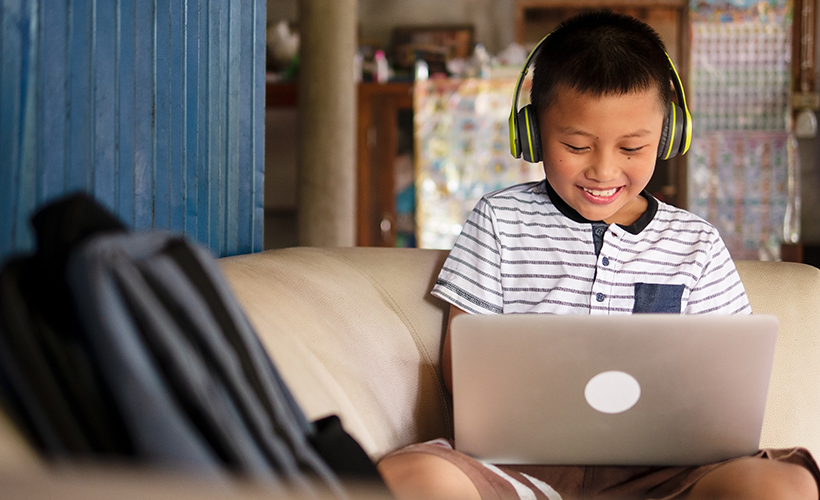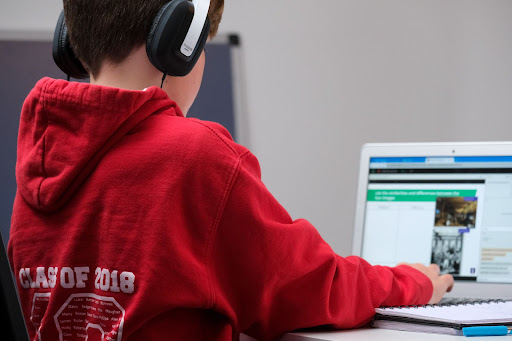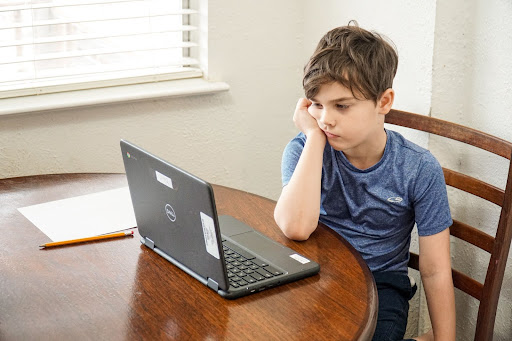Top 6 Challenges Students Face While Learning in a Virtual Classroom

Over the past three years, we’ve seen an incredible pivot to remote working and learning. High-quality video calling and VoIP phone systems have made working and learning online easy and convenient for many. (Read this link if you are wondering “what is an IP phone system?”)
But it’s not without challenges, specifically for students learning online. If you want to teach effectively online, you should be aware of the hurdles for students, especially those who are joining their first e-learning course. After all, they may not have access to the same equipment such as a personal computer or an 8×8 phone.
With that in mind, let’s go over six of the most common challenges students face while learning in a virtual classroom—and how you can solve them.

The Challenges of Remote Learning
There are many benefits to remote work and learning; you don’t have to deal with workplace noise, and it’s easier for many people to focus in isolation.
But it’s not ideal for everyone: 64% of students surveyed expressed worries about their ability to concentrate and keep the self-discipline required for distance learning.
Issues that students have with online learning include organization, access to technology, and feelings of isolation. Let’s go through some of them in detail, and see how you can help your students overcome them.
1. Organization and Avoiding Distraction
In recent years, teachers have been expected to immediately switch their classes online without any further training or funding. Since dedicated learning management systems are typically very expensive, they’ve had to provide e-learning using many digital tools.
They open several tabs at the beginning of the day, switching between them as needed. They attend virtual school, parent, and student meetings in an effort to manage the volume of information we are now dealing with and choose the best teaching approach. They have to grade the assignments submitted by various sources. This amount of information and context-switching isn’t ideal for teachers, or students. It makes organization and concentration much harder than they already would be.
 Sadly, a lot of schools weren’t ready to move lessons online. Without proper online learning tools, teachers have had to improvise and wait for the software to accommodate new uses: Zoom’s Focus mode or Google Meet’s shared whiteboards. There isn’t yet a software solution that’s perfect for e-learning, so in the meantime, teachers and students have to do what they can with the tools they have.
Sadly, a lot of schools weren’t ready to move lessons online. Without proper online learning tools, teachers have had to improvise and wait for the software to accommodate new uses: Zoom’s Focus mode or Google Meet’s shared whiteboards. There isn’t yet a software solution that’s perfect for e-learning, so in the meantime, teachers and students have to do what they can with the tools they have.
It’s not all the fault of e-learning. Concentration issues aren’t a behavior management issue that’s exclusive to the online class: teachers have been dealing with it in person their whole careers. But in the virtual classroom, it’s harder to control.
Teachers can create and enforce routines and behavior management strategies in the classroom. This minimizes distractions and helps students use their time in class effectively. Creating those routines and behavior strategies is more difficult when all of your students are in different buildings.
Even worse, students are connecting to a virtual classroom from houses that are both organized and disorganized. This makes it significantly harder to establish an effective learning environment for everyone. Students might have a lot of distractions at home: young siblings, parents, dogs, cell phones, and other gadgets they’re forced to sit with just to attend class.
Many don’t have a specific quiet area to work in. Those who do have a workstation may find it tempting to be close to their bed or couch and could sneak off for five minutes while nobody’s looking.
And for the pupils, the distractions aren’t all pleasant ones. Attending school in person provided an escape for many kids in difficult home situations. It was a secure setting where they were able to focus on their learning. However, in the world of remote learning, pupils don’t have that equal footing. Whatever’s going on at home is happening in the “virtual classroom,” and that will affect their performance in lessons now and in the future.

2. Access to Tech
So much of the remote-work revolution relies on moving the heavy lifting from static hardware to upgradeable software. The best contact center technology isn’t a physical phone—it’s a solution that eliminates the need for a proprietary phone system. (What is a contact center?) But online education has increased the number of supplies that kids need for school. Many of these things cost a lot of money.
Students will need a computer or laptop to succeed in a virtual classroom. They need access to a dependable internet connection. Significant disparities in access to technology exist between socioeconomically advantaged and underprivileged schools, according to a recent OECD report.
Nearly all teenagers at privileged schools in the U.S. have access to a computer at home for academic purposes. In underprivileged schools, just 75% of kids had the same resources. Families with many children experience a burden on their technological infrastructure. This is particularly true because many parents compete for access while working from home.
3. Learning to Use New Tools
Without specific training, teachers, students, and parents find it challenging to get into using a new learning management system. They get frustrated and overloaded by the information they have to learn to go digital.
In a new digital class, it’s always a good idea to incorporate a computer literacy class for both teachers and pupils. If you’re introducing new software, make sure everyone is properly trained in using it. If students rely on emails to get their grades and feedback, teachers need an email template builder to make sure that’s done right.
Parents, teachers, and kids adjust poorly to distance learning without preparation. Only 65% of the administrators surveyed, for the OECD study above, believed that their teachers had the technical abilities to use online learning platforms.
Once again, less well-off schools are the hardest hit by this deficit. Compared to their more advantaged counterparts, teachers in disadvantaged schools are less likely to have access to mentors and training that could help them employ the necessary technologies.

4. Cybersecurity Practices
Moving so much work and learning online has radically increased our exposure to hacks and other kinds of cyberattacks.
We can’t guarantee that our data will be secure before we start using one of the many applications we need to do digital learning. But we can still exercise caution when communicating with students and handling their information. By following some simple, straightforward guidelines, teachers can reduce the risk to themselves and their students:
- Be careful when opening emails from unknown senders.
- Avoid using dubious websites and programs.
- Before clicking on a vague and urgent-seeming link, double-check the email address
- Do as much of your contact with students as possible over secure apps like Zoom and Google Meet, and avoid using email wherever possible to reduce your exposure to cyberattacks.
- Don’t click on strange links.

5. Feelings of Isolation
Remote work and education can have a significant effect on mental health, creating feelings of isolation. Many companies have found they have to think about how to stay mentally healthy while working remotely.
In the classroom, students can make eye contact, react as a group, share their experiences, make jokes, and make nonverbal contact, which is good for their social skills. All of this is absent from remote learning—unless teachers make an effort to make up for that.
Students need to be able to conduct independent research for questions like “what is revenue?” or “what is PBX?” That’s easy enough to port over to online learning, and the remote environment might even help students develop that.
A “social-emotional” approach to education empowers students to:
- Control their feelings.
- Interact with people in a variety of settings in a cooperative and polite manner.
- Actively listen.
- Read body language and facial expressions.
- Manage stress and practice self-care.
- Develop self-awareness.
- Demonstrate affection and empathy.
- Make responsible decisions.
- Engage in self-reflection.
Distance and other barriers to communication are imposed by remote learning. Certain obstacles make it more challenging to teach these abilities.
Education is about more than just learning. It’s also about how students and teachers connect. Today’s teachers must not only deliver lessons, but also support their pupils and make the class feel like a close-knit group. Make it clear to your kids that you are willing to talk. When evaluating assignments, use kindness. Ask each pupil how you can help if they’re having issues with remote learning.

6. A Lack of In-Person Interaction
 Without a teacher’s physical presence and face-to-face interaction, it can be challenging to keep students interested in online courses.
Without a teacher’s physical presence and face-to-face interaction, it can be challenging to keep students interested in online courses.
It’s obviously difficult to do science demonstrations (physics, chemistry experiments) without in-person instruction; hands-on subjects like nursing and art are more difficult, too. And even in written academic work, there are all kinds of things students pick up from their peers they miss out on over the internet. It’s much easier to learn how to write a thesis proposal when you have one or two people sitting next to you figuring it out, too.
There are many ways to keep students’ attention during online lessons: slideshows, videos, tests, gamification, and bite-size learning. You’ll have to experiment with different ideas until you find something that works for you and your subject. Why not ask your pupils for help? Have them explain concepts back to the class or teach their classmates to keep them engaged.
Conclusion
These are just some of the many challenges of virtual learning, but as you can see, there are ways to mitigate them. In the next couple of years, as remote work and distance learning land where they may, we’ll see better tools to help us overcome these challenges and more.